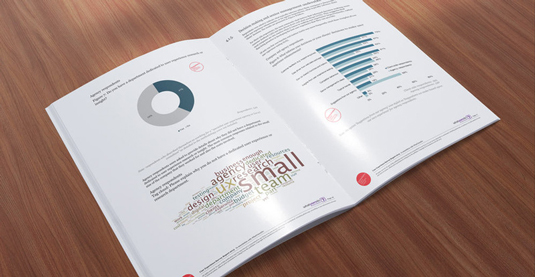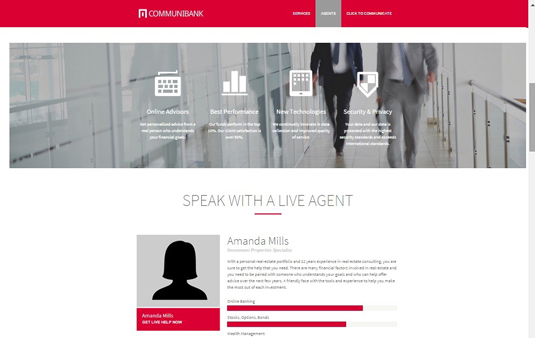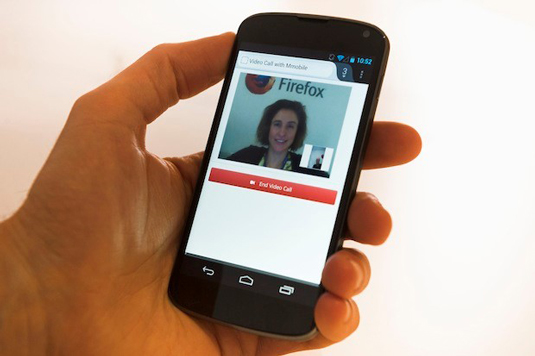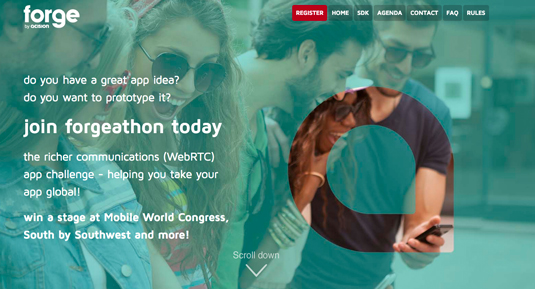How WebRTC is going to transform web design
This rich communication technology offers huge opportunities to developers, says Eric Bilange of Acision.
Every day we see company emails or websites that distort badly on a mobile device or links sent via an OTT (over-the-top) message for a website that will only display properly on a desktop.
There are numerous sites, particularly in retail, where it is difficult for a user to see the product categories because the icons are so small. In these situations, pages are clearly built for a desktop screen and a potential customer would have to zoom in to view the areas they may be interested in.
A bad or insufficient user experience can impact a consumer's view of the brand as their frustrations build from problematic navigation and uneasy use. In fact, according to research by Netbiscuits, 91 per cent of consumers, particularly across the 18-34 age range, will turn to a rival brand if the mobile site is inadequate.
Huge opportunity
Bad user experience is costing companies sales – and this is a huge opportunity for developers. Consumers today have no patience for poor user experience (UX), but surprisingly some brands do not appear to be taking the proper steps to understand what their customers deem to be a good UX.
According to an E-consultancy report, 78% of client-side respondents said their company wanted to deliver the best online user experience to its customers, but 55% of companies weren't conducting any user experience testing.

In addition, nearly three quarters of the companies surveyed thought that user experience could lead to higher sales conversions, and around 40% said it led to stronger brand loyalty.
Getting it right
But if it's so important, why are so many brands still not getting it right?
When there are so many alternative services accessible to consumers and so many new, rich and digital technologies to support new engagement models, a stand-out user experience is the only easy to integrate into a web or mobile app but the best way to maintain engagement and dialogue. This presents both a huge opportunity and a major challenge for developers.
So how can you create engaging mobile services when attention spans are dwindling and the competition is on your heels? Studies have shown that 32% of consumers will start abandoning slow sites within between one and five seconds, so there's really not much time to make an impact.
Make it irrestistible
The key to solving this challenge is creating experiences that users can't resist.
New technologies like WebRTC can help developers to do that. They are enabling innovative two-way communications, allowing brands to communicate with customers in real-time through rich media, and letting developers create deeper, more meaningful engagement.
Where technology is often thought to put distance between the company and its customers, and can be considered faceless, WebRTC brings this engagement back through voice and image-led experiences, shunning away from automated responses and providing real-time and personable interaction.
Banking brilliance
One area of opportunity is in the banking sector, which is leading the way with new video banking services that allow customers to see and talk with advisers over their mobile device and carry out transactions.
For example, Blacc Spot Media has been working with Acision to build a banking prototype, showcasing how a customer can connect directly to an available customer service representative or agent via a kiosk/tablet application in the simulated banking environment.

The customer can browse the banking website and click-to-communicate with a banking agent of their choosing, that is available at a time that suits them straight from their smart device or web browser, initiating a video call, instant message exchange or voice call.
This provides a VIP style service and makes the consumer feel like they are important, and valued.
Transforming smart devices
The take up of WebRTC services has the potential to transform the role of smart device in customer experience. Rather than looking to a call centre or Twitter handle, with better communications features and engaging services, an application connecting users directly with a company representative could become their first port of call.
Imagine being able to send an instant message via your preferred OTT app to a retailer to see if they stock a particular item of clothing in store, you'd seen online? The ease of use for the customer, as well as the ability for brands to build personalised relationships with customers, is extremely appealing.

Compared to social forums like Twitter for example, dedicated communications platforms such as OTT apps are private, meaning any enquiries or issues from customers are not aired publically.
This also means the user can be authenticated, adding another level of security to the data exchanged, and sensitive or private questions can be asked, with a quick, personal response.
In addition, with rich media tools, brands can turn to explainer videos, personalised voice messages, and photo instructions on product use to fulfil better customer service.
Next big thing
However, we've noticed that more developers need the opportunity to experiment with WebRTC to understand its full possibilities. Flexible communications frameworks enable accelerated development of secure and sophisticated features but in many senses, we have only tapped the surface of what is possible with this technology.

To find the next big thing and enable you to build an app based on WebRTC, we're hosting an online 'forgeathon' open to developers around the world. The aim is to spread the word about WebRTC technology, and to build a community of developers that continually create WebRTC, feature rich apps and web services.
The forgeathon richer communications app challenge invites developers to create innovative WebRTC based services using the forge by forge by SDK toolkit, either creating a new Android, iOS or web app or service, or enhance an existing one.
We want to help the winner take their app or service global, so the first prize includes providing them with a platform to showcase their new services and to meet with leading influencers and media, during two of the world's largest and leading tech events, Mobile World Congress 2015 and SXSW Interactive 2015!
Push the boundaries
Rich communication tools can be integrated into many services, allowing companies to create innovative, smart and overall standout experiences for their customers. By pushing the boundaries of new technologies like WebRTC, every developer can make their company realise the need for beautifully designed and seamless mobile experiences that exceed customers' expectations by offering enhanced functionality.
The closing date to receive submissions for the forgeathon richer communications app challenge is 8am GMT on 19th February, so to learn more or register visit http://forgeathon.bemyapp.com
Words: Eric Bilange
Like this? Read these!
- Get started with WebRTC
- How to build an app: try these great tutorials
- Brilliant Wordpress tutorial selection

Thank you for reading 5 articles this month* Join now for unlimited access
Enjoy your first month for just £1 / $1 / €1
*Read 5 free articles per month without a subscription

Join now for unlimited access
Try first month for just £1 / $1 / €1
Get the Creative Bloq Newsletter
Daily design news, reviews, how-tos and more, as picked by the editors.

The Creative Bloq team is made up of a group of art and design enthusiasts, and has changed and evolved since Creative Bloq began back in 2012. The current website team consists of eight full-time members of staff: Editor Georgia Coggan, Deputy Editor Rosie Hilder, Ecommerce Editor Beren Neale, Senior News Editor Daniel Piper, Editor, Digital Art and 3D Ian Dean, Tech Reviews Editor Erlingur Einarsson, Ecommerce Writer Beth Nicholls and Staff Writer Natalie Fear, as well as a roster of freelancers from around the world. The ImagineFX magazine team also pitch in, ensuring that content from leading digital art publication ImagineFX is represented on Creative Bloq.
